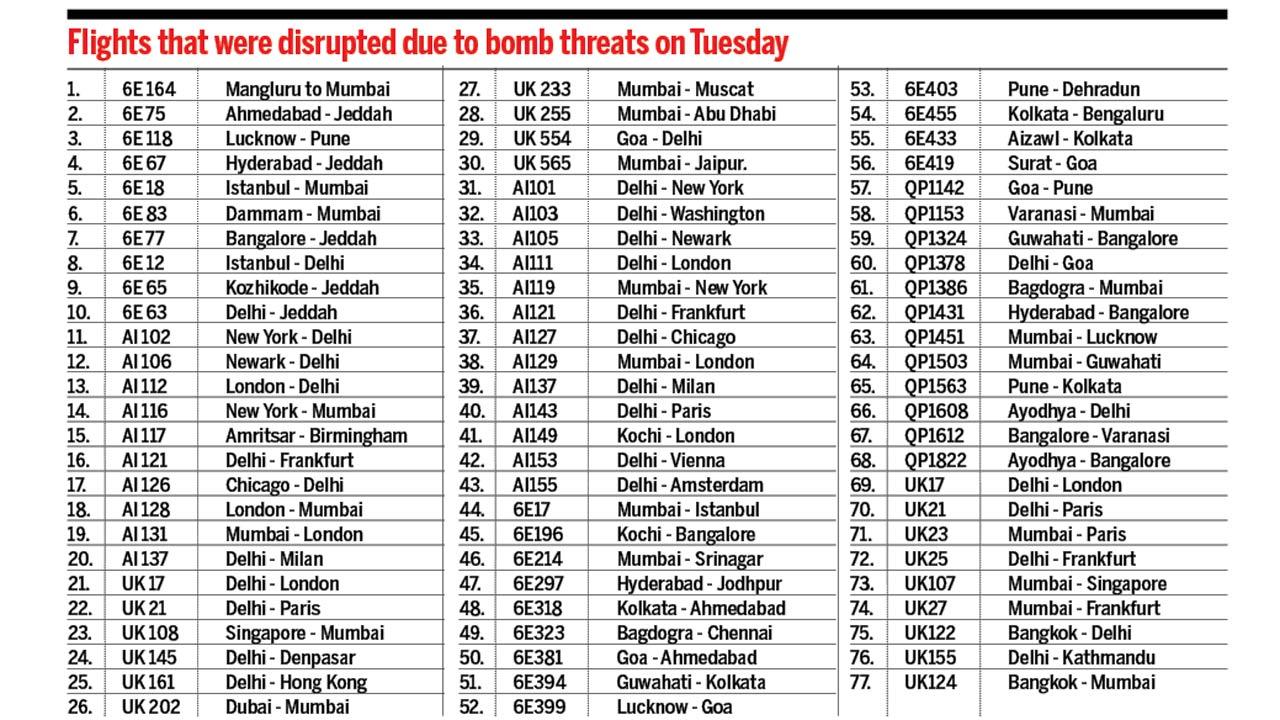The exponential growth in the number of threats each day is stressing out and fatiguing the system, say officials

A SpiceJet aircraft travelling from Darbhanga to Mumbai received a bomb threat via social media on October 16. Pic/Rane Ashish
India's aviation sector remains on high alert as a new wave of bomb threats has impacted 77 more flights from early Tuesday morning until press time. Airlines such as Vistara, Air India, Akasa Air, and Indigo have been affected, prompting authorities to enforce stricter security measures at airports nationwide. Passengers are now subjected to more rigorous security screenings. Since Monday, (October 14) the total number of flights targeted with bomb threats has surged to 191.
ADVERTISEMENT

A senior Bureau of Civil Aviation Security (BCAS) official said, “We received two waves of threats today (Tuesday) one was during the wee hours of the morning while the other wave was in the evening. The number of flights which received threats in the morning were 31 and in the evening 46 bringing the number to 77 rural threats.” The official added, “This is becoming more and more concerning as the number of threats is increasing day by day. The exponential growth in the number of threats each day is stressing out and fatiguing the system in place.”
“We know that 99.99 per cent of the threats will turn out to be fake. But no one wants to take a chance with the remaining 0.01 per cent cases as well. That is why despite strict pre-departure security checks at Indian airports, we take bomb threats very seriously, knowing fully well that most will turn out to be fake,” an official of the Ministry of Civil Aviation (MoCA) told mid-day. Asangba Chuba Ao, Joint Secretary of the Ministry of Civil Aviation, said, “This (hoax bomb threats) is something that is being looked into very seriously by the aviation regulator. They are working towards finding solid solutions.”
What after bomb scare?
Once a bomb threat is reported, the Central Industrial Security Force (CISF) is immediately informed as per the protocols of the Bureau of Civil Aviation Security (BCAS). The Bomb Threat Assessment Committee (BTAC), which includes members from both BCAS and CISF, then evaluates the credibility of the threat. They determine whether the threat is specific or non-specific. During the assessment, they verify the medium through which the threat was communicated—whether by email, call, or message—and investigate the origin of the threat.

If the threat is classified as non-specific, no further inspection is required. However, if it is deemed specific, a thorough inspection is conducted. Grounded planes are moved to an isolated bay, and passengers are deboarded if they are on the aircraft. If the plane is airborne, the pilots coordinate with Air Traffic Control (ATC) to trigger an emergency landing at the nearest airport. The bomb disposal squad, along with sniffer dogs, thoroughly checks the aircraft, including all passenger luggage and cargo, which is also scanned through X-ray machines. Once the aircraft is declared safe, normal operations resume.

 Subscribe today by clicking the link and stay updated with the latest news!" Click here!
Subscribe today by clicking the link and stay updated with the latest news!" Click here!







